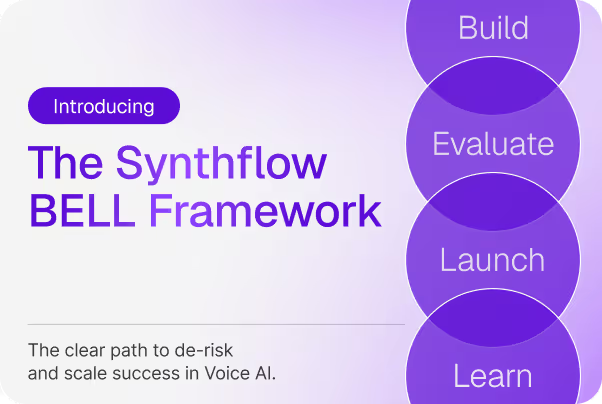Conversational AI
How to Buy an AI Phone Number

Table of Contents

If you’re deploying an AI voice agent, you’ll need more than just call flows and prompts—you’ll need a real, working phone number that people can dial or receive calls from. But what does it actually take to get a phone number for an AI agent? Is it different from buying a number for a call center or sales rep?
In this article, we’ll walk you through how to buy, configure, and manage a phone number for an AI voice system, whether you're using a provider like Twilio or bringing your own SIP carrier.
What Is an AI Phone Number?
An AI phone number is a dedicated number provisioned for use by a virtual or AI voice agent. It can send and receive inbound or outbound calls just like a human operator—but instead of ringing a person’s phone, it routes the call to an AI system trained to answer, converse, and take action.
AI numbers are typically connected to:
- Customer support lines
- Sales or demo booking lines
- Service scheduling flows
- Call routing systems
- Voice bots for lead qualification or appointment reminders
You can use local, toll-free, or even international numbers, depending on your setup and carrier.
Do You Need a Special Type of Number?
No—you can use any standard number (U.S., toll-free, etc.) as long as it’s configured to forward or connect to your AI voice platform.
That said, you should ensure the number provider supports:
- SIP trunking or programmable voice (e.g., Twilio, Telnyx, RingCentral)
- Call forwarding to webhooks or AI endpoints
- Reliable inbound and outbound routing
- Regulatory compliance in your region
Step-by-Step: How to Get a Number for Your AI Agent
Here’s how most businesses set up an AI phone number:
1. Choose Your Telephony Provider
You have two options:
- Buy a number through your AI platform (e.g., Synthflow offers temporary U.S./Canada numbers for testing)
- Bring your own number via Twilio, SIP trunk, or existing phone system
For production use, it's recommended to use your own Twilio account or SIP trunk. This gives you full control over regulatory compliance and caller ID behavior.
2. Provision a Number
- Log into your Twilio account
- Navigate to Phone Numbers > Buy a Number
- Select country, area code, and capabilities (voice required)
- Click Buy and note the SID
If you're using a SIP carrier:
- Work with your telephony vendor to assign a DID (Direct Inward Dialing) number
- Point the number to your SIP URI or IP endpoint
3. Connect It to Your AI Platform
Depending on your platform:
- Use an API or UI to bind the number to an AI assistant
- Set up inbound call routing from Twilio or SIP to the AI webhook or agent ID
- For outbound calls, register the number as your caller ID (CNAM)
Synthflow, for example, allows you to link a Twilio number directly from your account or connect a SIP trunk in minutes—no dev work required.
4. Configure Routing Logic
Once connected, you can:
- Set custom greetings and flows per number
- Assign different numbers to different AI agents
- Enable fallback rules or escalation to human agents
- Route based on time of day, location, or caller input
Pro tip: Use different numbers for inbound vs. outbound tracking, or per campaign.
5. Test the Number Thoroughly
Before going live:
- Call the number from multiple devices and carriers
- Check speech recognition, latency, and response quality
- Confirm fallback behaviors (e.g., voicemail, transfer, hangup)
- Verify call recording or transcription if enabled
What About International Numbers?
Most AI platforms (including Synthflow) support U.S., Canada, UK, EU, and APAC numbers—but there are region-specific rules for:
- Call recording notices
- Number registration (esp. in India, Germany, Japan)
- Caller ID display
- Language/localization support
If you’re expanding globally, work with your provider to ensure regulatory alignment.
What About VoIP or Virtual Numbers?
AI agents work seamlessly with virtual numbers, VoIP numbers, and cloud-based PBX systems—as long as they support:
- SIP trunking
- Voice API/webhook forwarding
- Number authentication or CNAM registration
Avoid free VoIP apps that don’t offer business-grade controls or routing logic.
Can I Use My Existing Business Number?
Yes—if your provider allows call forwarding or SIP peering. You can forward your existing line to your AI agent or port the number into a compatible platform.
Important: Make sure your AI system can detect forwarded calls and apply the correct flows.
Synthflow supports number porting, forwarding, and SIP URI targeting, making it easy to integrate with your existing telephony setup—whether you're using Twilio, Vonage, Telnyx, or a traditional SIP carrier.
Final Thoughts
Setting up a phone number for your AI voice agent is easier than most teams expect. Whether you're testing a new use case or scaling a high-volume call flow, the right number setup gives you:
- Full control over call routing
- Better branding and caller experience
- Enhanced tracking and segmentation
- Compliance with telecom regulations
If you’re just getting started, Synthflow lets you test with a U.S. number instantly—and move to a production-ready setup with Twilio or SIP in just a few steps.
Your AI phone number should do more than just ring — it should connect, qualify, and convert. Discover how easy it is with Synthflow. Book a demo today.



.avif)